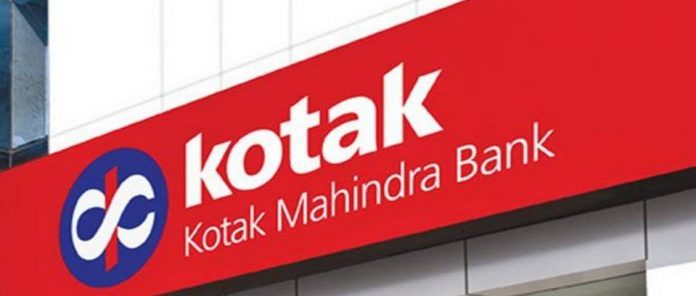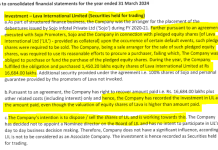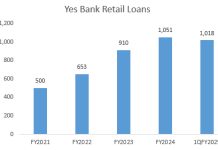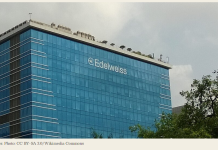The bank’s promoter-cum-CEO and its board of directors have not understood the letter and spirit of an important banking rule, but have instead sought to take it as a starting point for negotiation.

Uday Kotak. Credit: Reuters

Hemindra HazariBANKING17/AUG/2018
In an indictment of Kotak Mahindra Bank (KMB) and its promoter-CEO, Uday Kotak, the Reserve Bank of India (RBI) on the evening of August 14, 2018, unequivocally stated that the bank’s issuance of perpetual non-convertible preference shares “did not meet the promoter holding dilution requirement”.
The bank defiantly responded by stating: “We continue to believe that we have met the requirement and will engage with the RBI in this behalf.”
To appreciate the curious arrogance of this back-and-forth, one has to understand the leeway the RBI has given the bank and Uday Kotak in reducing the promoter stake in the bank.
When the RBI gave Uday Kotak a bank license in February 2003, the stipulation was that promoters must have a minimum of 49% shareholding for a minimum period of five years. Subsequently, following the mis-management and collapse of the promoter-managed Global Trust Bank, the RBI reviewed that decision, and in its February 28, 2005 guideline, it emphasised diversified ownership, with single entity or group of related entities holding a maximum of 10% shareholding; higher levels required RBI approval.
Thereafter, as per the RBI’s revised guidelines for licensing of new private banks issued on February 22, 2013, it stated that the promoter should have a maximum shareholding of 15% “within 12 years from the date of commencement of business of the bank.”
For KMB, the RBI’s latest guideline meant that by February 2015, the promoters’ shareholding should have been 15%. Uday Kotak resisted the dilution of his holding to 15% and argued that RBI’s new norms should not be retrospectively applied as he was given the license under RBI’s January 3, 2001 policy which stated:
“The promoters’ contribution shall be a minimum of 40 per cent of the paid-up capital of the bank at any point of time.”
Where promoters consisted of individuals, the RBI used its discretion to compel banks to reduce their stake. In some banks, such as IndusInd Bank which was established in 1994, the promoters reduced their stake to 15% (p 38 annual report) by March 31, 2016, i.e., within three years of the RBI’s revised guideline.
In Yes Bank, which received its banking license at the same time as KMB, the promoters’ stake was brought down to 20% by March 31, 2017 and has remained at that level as the promoters are contesting certain issues in court.
In Lakshmi Vilas Bank, an old private sector bank, the promoters’ stake was reduced to marginally below 9% by March 31, 2018.
But in the case of KMB, the RBI repeatedly allowed Uday Kotak an elongated timeline to reduce his stake, first to 20% by March 31, 2018 and 10% by March 31, 2020 in a circular dated June 27, 2012. Subsequently, a further relaxation was given by the RBI in a notification dated February 1, 2017, whereby the promoters had to reduce their stake to 20% by December 31, 2018 and 15% by March 31, 2020. In all, that amounts to an extension of five years over the original deadline of March 31, 2015.
The banking regulator has never publicly explained why KMB required treatment that was denied to other individual promoters of other private sector banks. Indeed, private banks, and KMB most of all have treated the RBI’s circulars as mere starting points for negotiation, as underlined again by KMB’s latest response.
By the RBI’s allowing of a five-year extension to reduce the promoters’ equity stake in KMB, Uday Kotak and the other promoters of KMB have gained handsomely.

The Reserve Bank of India (RBI) logo is pictured outside its head office in Mumbai. Credit: Reuters/Danish Siddiqui
This writer in April 2017 had estimated the gain to the promoters and consequent notional loss to non-promoter shareholders of KMB at nearly Rs 4,000 crores, as the share price increased to Rs 872 on March 31, 2017 from Rs 657 as on March 31, 2015. As the share price of KMB further increased to Rs 1,342 on June 30, 2018, the notional gain increased to a staggering Rs 15,609 crores.
Rohit Rao, chief communication officer, Kotak Mahindra Group, has contested this analysis and stated: “Your calculation [of] Kotak Mahindra Bank’s (KMBL) requirement to bring down promoter’s equity stake in KMBL to 15% by 2015 is incorrect. The correct date is March 31, 2020, which is still over a year-and-a-half away. The first time Reserve Bank of India (RBI) stipulated this requirement on KMBL, the date was in 2012 [and] KMBL’s requirement to bring down the promoter’s stake was 10%. This has since been raised by the RBI to 15%.”
It was apparent on August 2, 2018, when KMB decided to issue non-convertible Perpetual Non-Cumulative Preference Shares (PNCPS) of Rs 5 bn with an annual dividend of 8.1% that the bank did not plan to conform to what was allowed under the RBI’s extraordinary forbearance, and wanted to retain Uday Kotak’s 30% equity stake as on June 30, 2018.
Trying to exploit the loophole in RBI’s terminology of “paid-up capital”, KMB release to the stock exchanges stated: “Post this issuance of PNCPS, promoter holding is 19.70% of the paid-up capital. This meets the RBI’s communications in this behalf for December 31, 2018.”
Despite the RBI not specifying equity capital, it was always understood by all the private sector banks and the capital markets that RBI was referring to promoters’ equity stake in banks when it referred to paid-up capital.
For a bank and for Uday Kotak, the promoter-CEO, to try to stretch ‘paid-up capital’ to include preference capital shows its willful disregard of the banking regulator. Preference capital is a debt instrument with no equity ownership wherein the holders are paid a dividend prior to the equity dividend of shareholders.
It also displays that the board of directors of KMB were willing to publicly challenge the spirit of the regulation.
The capital market and the regulator expects banks to follow not only the letter but also the spirit of regulation. In this case, the entire board of directors, led by Prakash Apte, the non-executive chairman, are to be held accountable.
Good governance?
Uday Kotak is no ordinary promoter. He chaired the prestigious Securities and Exchange Board of India (SEBI) Committee on Corporate Governance, which submitted its report in October 2017.
The introduction of that report states: “In fact, good firm-level governance often makes up for weaknesses in a country’s corporate laws or the enforcement of such laws.”
In this case, the chairman of the committee on corporate governance leveraged a loophole in a regulatory guideline. This was clearly understood by the capital market as a means of maintaining his own ownership stake in the bank. Apparently the board of directors of KMB, including the independent directors, meekly endorsed this view. That such an approach would undermine the credibility of the banking regulator and in turn the reputation of the Indian market was of no concern to Uday Kotak and the board of directors of KMB.
Not only did the board defy the regulator through the issue of preference capital, arguing that it will result in lowering the stake of the promoter, but even when the regulator overruled it, the bank has continued with its defiant stand.
It is clear that here the bank’s promoter-cum CEO and its board of directors have not understood the letter and spirit of an important banking regulation. How well would this act match up against the RBI’s fit-and-proper test?
The disregard for the banking regulator highlights the importance of separation of ownership from management in a bank. By committing the strategic error of permitting banks like KMB and Yes Bank to allow their promoters to be CEOs, the regulator has undermined the independence of the board.
In highly leveraged institutions like banks, the largest stakeholders are unsecured depositors, and promoters, even those with a majority equity stake, are minority stakeholders. In KMB, Uday Kotak, owning a 29.77% equity stake in the bank and being the executive vice-chairman and CEO, effectively dominates the board by being the single largest shareholder and the CEO, and hence it is no surprise that the independent directors dutifully endorsed his exploitation of the loophole in the paid-up capital terminology.

The disregard for the banking regulator highlights the importance of separation of ownership from management in a bank. Credit: Reuters
Did Uday Kotak believe that since he was granted an extraordinarily long time frame to reduce his equity stake, he could do so in perpetuity through the issue of preference capital, and the regulator would endorse this ingenuity? Fortunately, this time, the RBI did not succumb.
The KMB preference capital episode is a wake-up call regarding the dangers of non-separation of ownership and management in a bank. While some have argued that further debate is needed, which is certainly the case, the regulator and the capital market should discard their rose-tinted glasses and see KMB’s little rebellion for what it is.
Hemindra Hazari is an independent market analyst.














